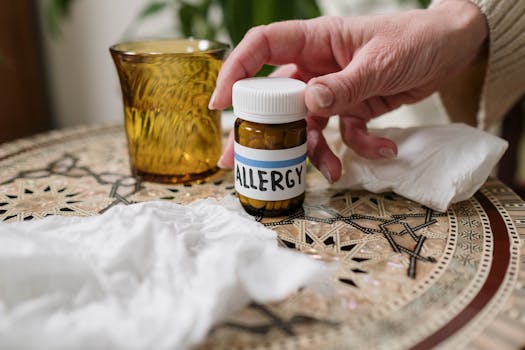
Understanding Allergies: Types, Triggers, and Treatment Options Explained
Takeaways: Allergies are common conditions that can significantly impact daily life. Understanding the different types of allergies, their triggers, and available treatment options is essential for effective management. This article provides a comprehensive overview to help you navigate the complexities of allergies.
Allergies affect millions of people worldwide, manifesting in various forms and intensities. From sneezing and itching to severe anaphylaxis, allergic reactions can range from mild discomfort to life-threatening emergencies. In this article, we will delve into the types of allergies, their common triggers, and the various treatment options available for effective management.
Types of Allergies

1. Seasonal Allergies
Seasonal allergies, often referred to as hay fever or allergic rhinitis, occur at specific times of the year, typically during spring and fall. They are primarily triggered by pollen from trees, grasses, and weeds. Symptoms include sneezing, runny nose, itchy eyes, and fatigue.
2. Food Allergies
Food allergies are caused by the immune system reacting to specific proteins found in certain foods. Common food allergens include peanuts, tree nuts, shellfish, fish, milk, eggs, wheat, and soy. Symptoms can range from mild hives and stomach discomfort to severe anaphylactic reactions.
3. Environmental Allergies
Environmental allergies can be triggered by substances in the environment, such as mold, dust mites, pet dander, and insect stings. These allergies can cause chronic symptoms like asthma, sinusitis, and skin conditions.
4. Drug Allergies
Drug allergies occur when the immune system reacts to a medication, such as penicillin or sulfa drugs. Reactions can vary and may include rashes, hives, or even anaphylactic shock in severe cases.
5. Insect Allergies
Insect allergies are triggered by stings or bites from insects such as bees, wasps, and fire ants. Reactions can range from localized swelling to severe systemic responses that require immediate medical attention.
Common Triggers of Allergies

Pollen
Pollen from trees, grasses, and weeds is a primary trigger for seasonal allergies. Monitoring pollen counts in your area can help you prepare for high pollen days.
Dust Mites
Dust mites are microscopic organisms that thrive in household dust. They are a significant trigger for asthma and allergic rhinitis. Regular cleaning and using dust-proof covers can mitigate exposure.
Mold
Mold spores can trigger allergic reactions, especially in damp or humid environments. Reducing moisture in your home and cleaning moldy surfaces is essential for prevention.
Animal Dander
Pet dander, which consists of tiny flakes of skin shed by cats, dogs, and other animals, is another common allergen. Frequent cleaning and grooming of pets can help reduce dander levels in your home.
Food
As mentioned earlier, certain foods can trigger allergies. It is crucial to read labels carefully and consult with a healthcare provider for proper diagnosis and management.
Treatment Options for Allergies

1. Avoidance
The most effective way to manage allergies is to avoid known triggers. This may involve lifestyle changes, such as staying indoors on high pollen days or eliminating certain foods from your diet.
2. Medications
Over-the-counter and prescription medications can help alleviate allergy symptoms. Antihistamines, decongestants, and corticosteroid nasal sprays are commonly used to treat allergic rhinitis and other symptoms.
3. Immunotherapy
Allergy shots or sublingual tablets can help desensitize the immune system to specific allergens over time. This treatment is generally recommended for severe allergies that do not respond to standard medications.
4. Emergency Treatments
For individuals with severe allergies, carrying an epinephrine auto-injector is crucial. This emergency treatment can rapidly reverse severe allergic reactions, such as anaphylaxis.
Conclusion








